Ammar El Falou
Reconfigurable Intelligent Surface Assisted Railway Communications: A survey
Jul 10, 2023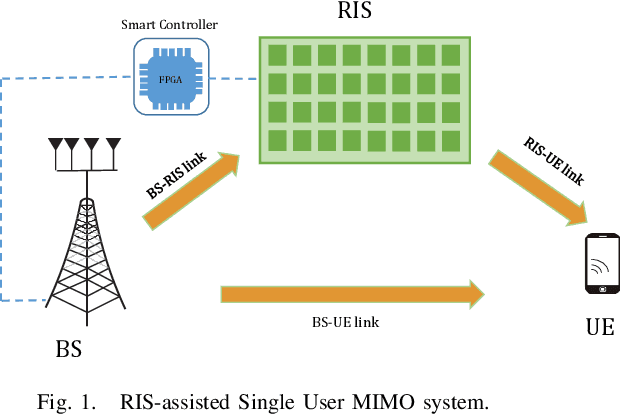
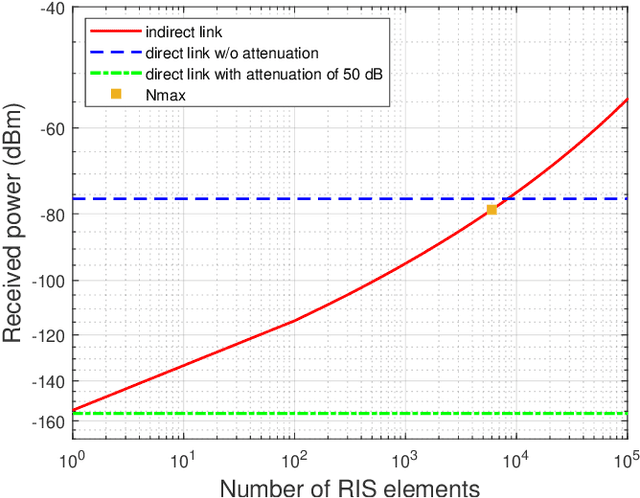
Abstract:The number of train passengers and the demand for high data rates to handle new technologies such as video streaming and IoT technologies are continuously increasing. Therefore the exploration of millimeter waves (mmWave) band is a key technology to meet this demand. However, the high penetration loss makes mmWave very sensitive to blocking, limiting its coverage area. One promising, efficient, and low-cost solution is the reconfigurable intelligent surface (RIS). This paper reviews the state of the art of RIS for railway communications in the mmWave context. First, we present the different types of RIS and review some optimization algorithms used in the literature to find the RIS phase shift. Then, we review recent works on RIS in the railway domain and provide future directions.
Extended NYUSIM-based MmWave Channel Model and Simulator for RIS-Assisted Systems
Jun 21, 2023



Abstract:Spectrum scarcity has motivated the exploration of the millimeter-wave (mmWave) band as a key technology to cope with the ever-increasing data traffic. However, in this band, radiofrequency waves are highly susceptible to transmission loss and blockage. Recently, reconfigurable intelligent surfaces (RIS) have been proposed to transform the random nature of the propagation channel into a programmable and controllable radio environment. This innovative technique can improve mmWave coverage. However, most works consider theoretical channel models. In order to fill the gap towards a realistic RIS channel simulator, we extend the 3D statistical channel simulator NYUSIM based on extensive measurements to help model RIS-assisted mmWave systems. We validate the extended simulator analytically and via simulations. In addition, we study the received power in different configurations. Finally, we highlight the effectiveness of using RIS when the direct link is partially blocked or non-existent.
Exploring High Tower Base Stations with Multi-User Massive MIMO for Rural Connectivity
Feb 13, 2023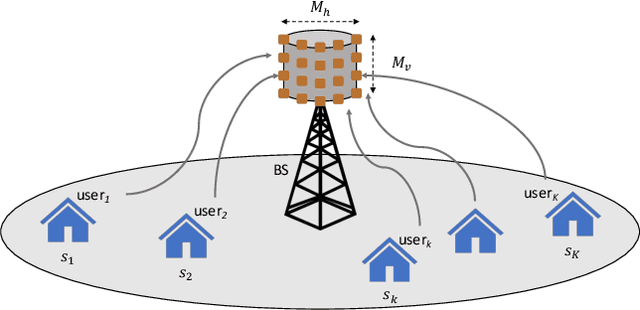
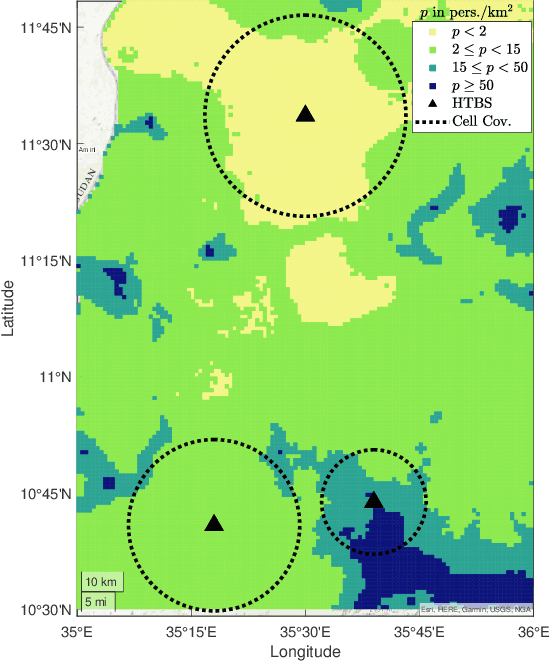
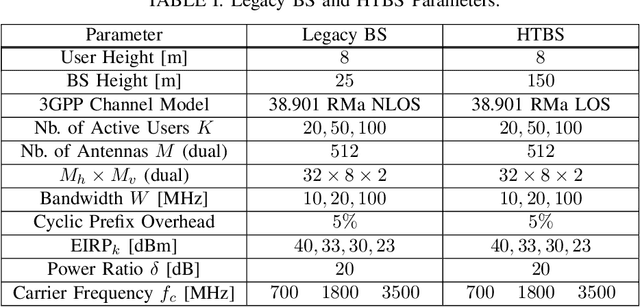
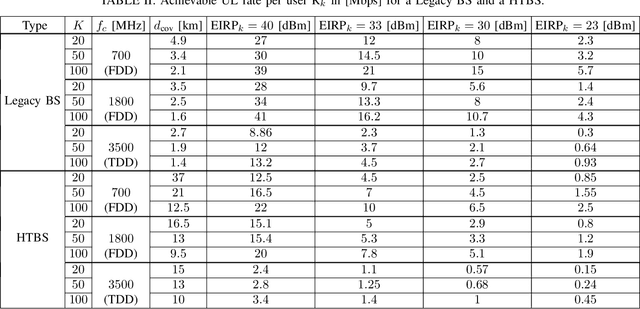
Abstract:The digital divide is a key issue worldwide. Almost 3 billion people, mainly in rural areas, are still not connected. In this article, we explore the capability of high towers base station (HTBS) with massive multiple input multiple output (mMIMO) precoding in offering low-cost rural connectivity. We previously showed the benefits of HTBS in the downlink. We focus in this work on the uplink (UL) where we compute the UL data rate per user for different values of transmit effective isotropic radiated power (EIRP). Our results show that the HTBS solution is viable as relatively good user UL rates are achieved with reasonable EIRPs. This is of high interest for covering rural areas, characterized by low population densities and a low number of active users, as the coverage is their main constraint, rather than the capacity as in urban areas. Techno-economical aspects and non-technological challenges for the HTBS solution are also discussed.
Enhancement of Rural Connectivity by Recycling TV Towers with Massive MIMO Techniques
Jun 13, 2022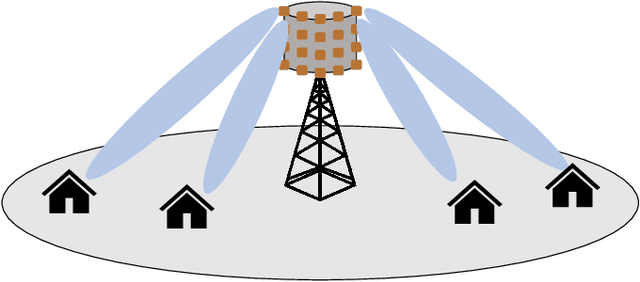
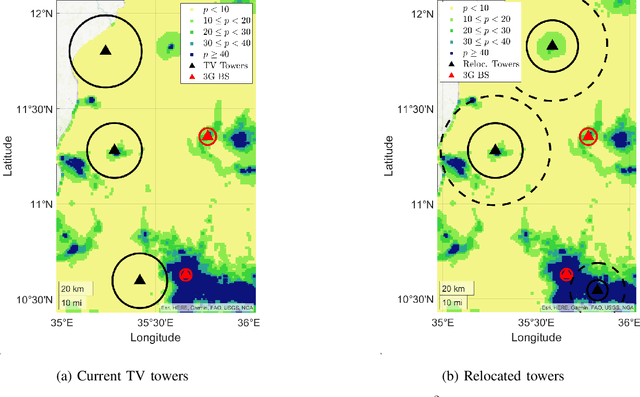
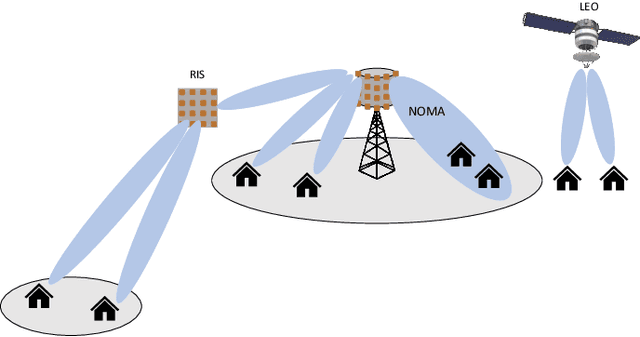
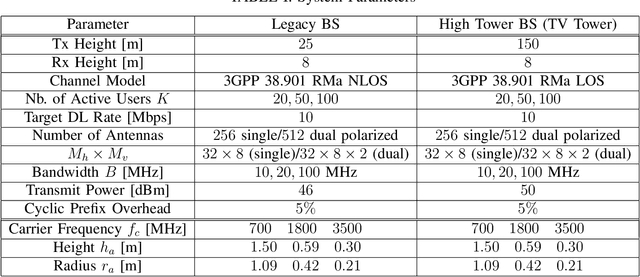
Abstract:Nowadays, the digital divide is one of the major issues facing the global community. Around 3 billion people worldwide are still not-connected or under-connected. In this article, we investigate the use of TV towers with multi user (MU) massive multiple input multiple output (mMIMO) techniques to offer connectivity in rural areas. Specifically, the coverage range is assessed for a MU mMIMO base station (BS) mounted on a high tower as a TV tower, and compared with a legacy mMIMO BS. The obtained results show that one high tower BS can cover an area at least 25 times larger than the area covered by a legacy BS. This is of high interest as recycling TV towers can enhance the rural connectivity with low expenditures. We apply the proposed solution to a realistic case study in an Ethiopian rural area, based on population densities and locations of current BS and TV towers. Our study shows that a high number of people can be covered by existing TV towers. Additional possible solutions to enhance rural connectivity are discussed in the last section.
 Add to Chrome
Add to Chrome Add to Firefox
Add to Firefox Add to Edge
Add to Edge